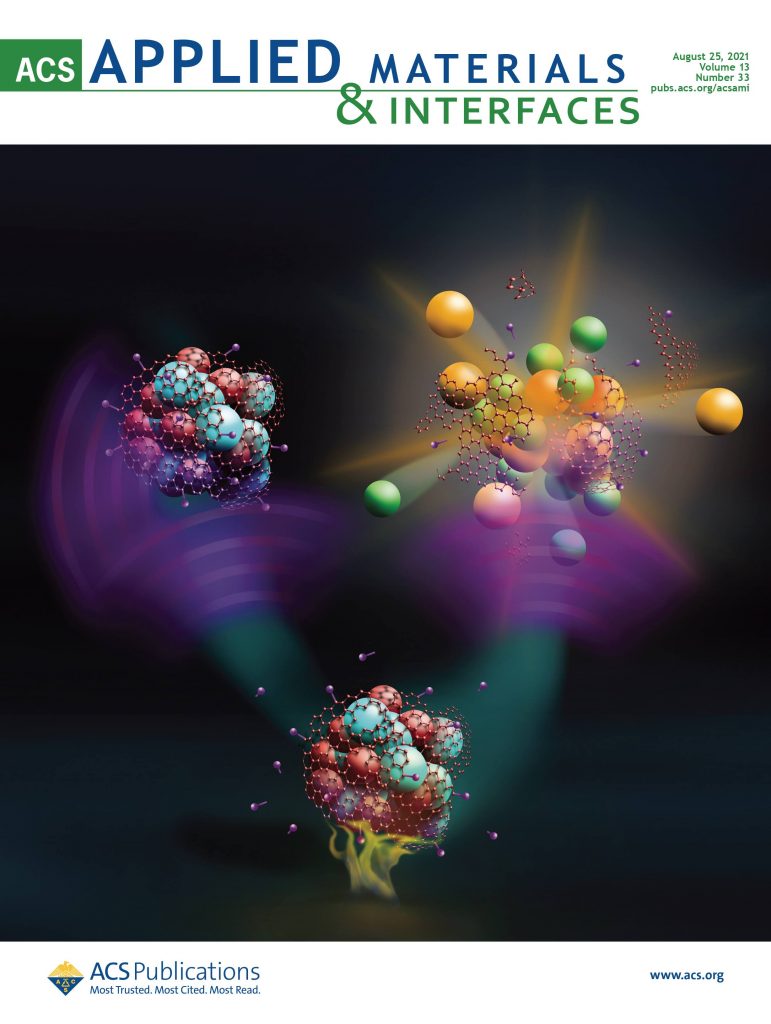Research led by Cyclone Engineers appears on the cover of ASC Applied Materials & Interfaces. The discoveries were published in the late August issue as “Smart Electromagnetic Thermites: GO/rGO Nanoscale Thermite Composites with Thermally Switchable Microwave Ignitability.”
The article includes authors and contributors Stuart Barkley, engineer with NSWC Crane Division (’21 Ph.D. mech engr); Adam Lawrence, graduate student in mechanical engineering; Murtaza Zohair, graduate student in mechanical engineering; Olivia Smithhisler, mechanical engineer with Honeywell; Cary Pint, Charles Schafer (Battelle) Chair in Engineering, associate professor of mechanical engineering; James Michael, assistant professor of mechanical engineering and Center for Multiphase Flow Research and Education affiliate; and Travis Sippel, associate professor of mechanical engineering and CoMFRE affliate
The research team demonstrated the development of a novel, graphene oxide nanoscale thermite composite with thermally tunable microwave ignitability. Thermites are often used in the energetics and propulsion fields as an ignition source or as a combustion modifier due to their high temperatures and high energy release, typically ignited using either a heat source or with impact.
In this work the team modifies a thermite with graphene oxide in order to make the thermite ignitable by microwave field and demonstrates the ability to tune the ignitability of the thermite through mild heating—switching the thermite from a state that cannot be ignited to one that can be ignited in fractions of a second by microwave.
The findings are the first report of an energetic material whose electromagnetic ignition properties are tunable and may lead to a new class of “smart” electromagnetic energetic materials.

